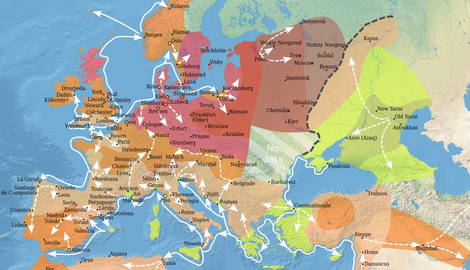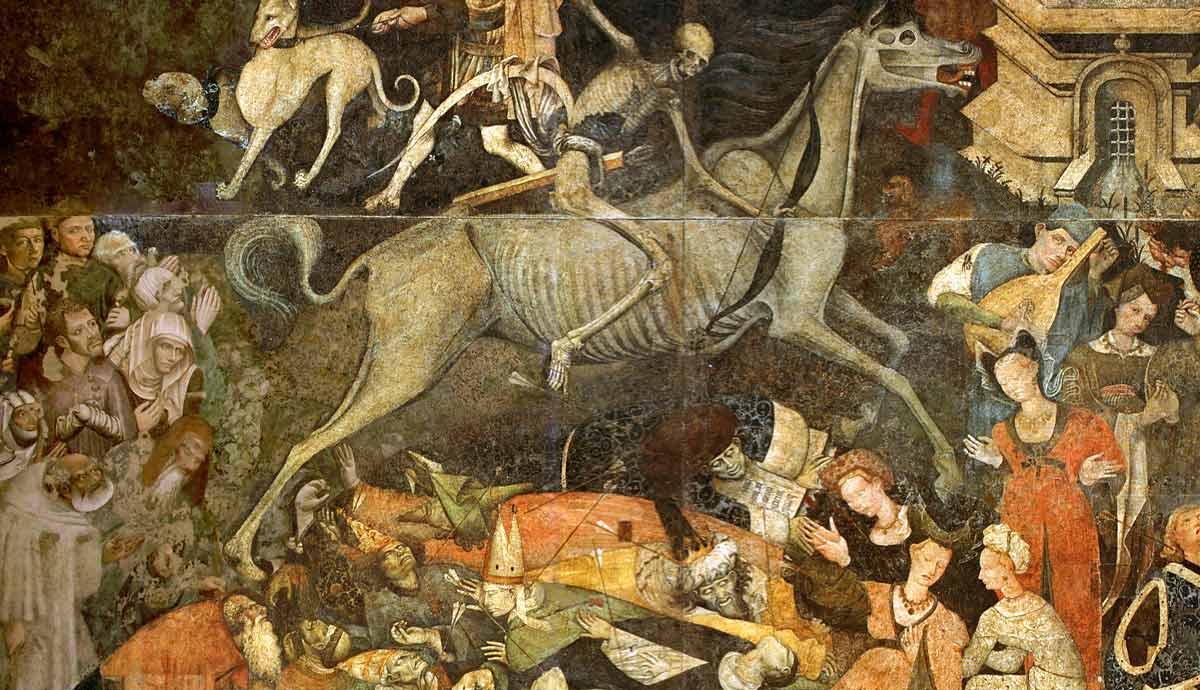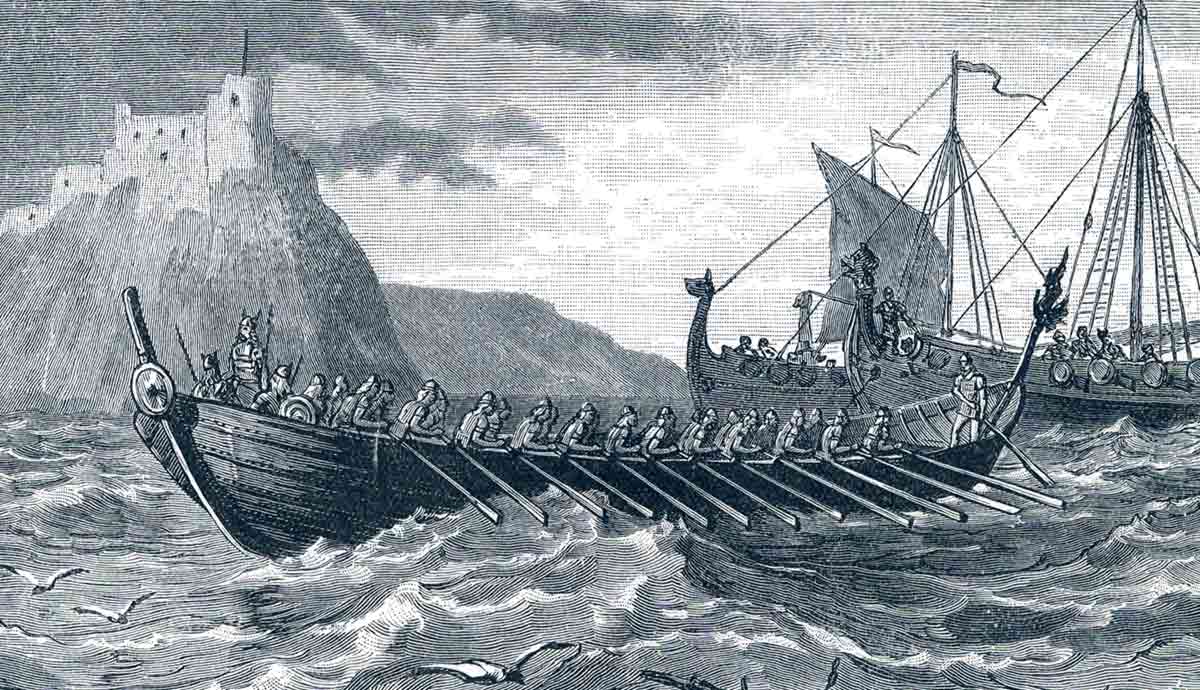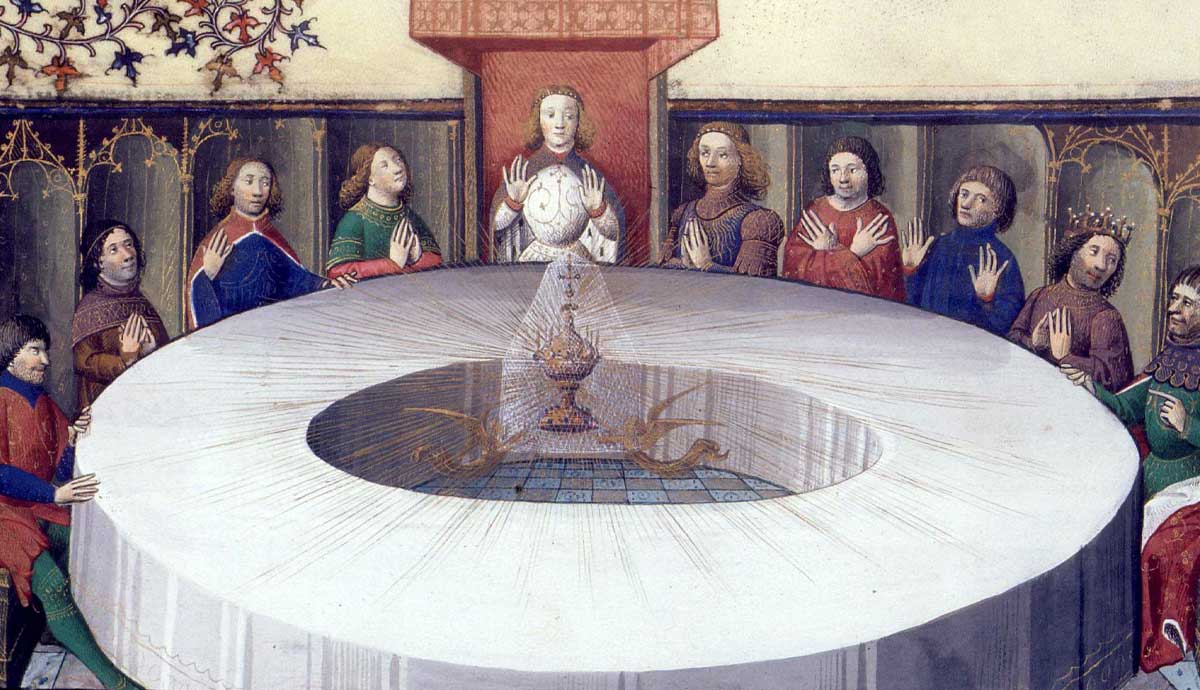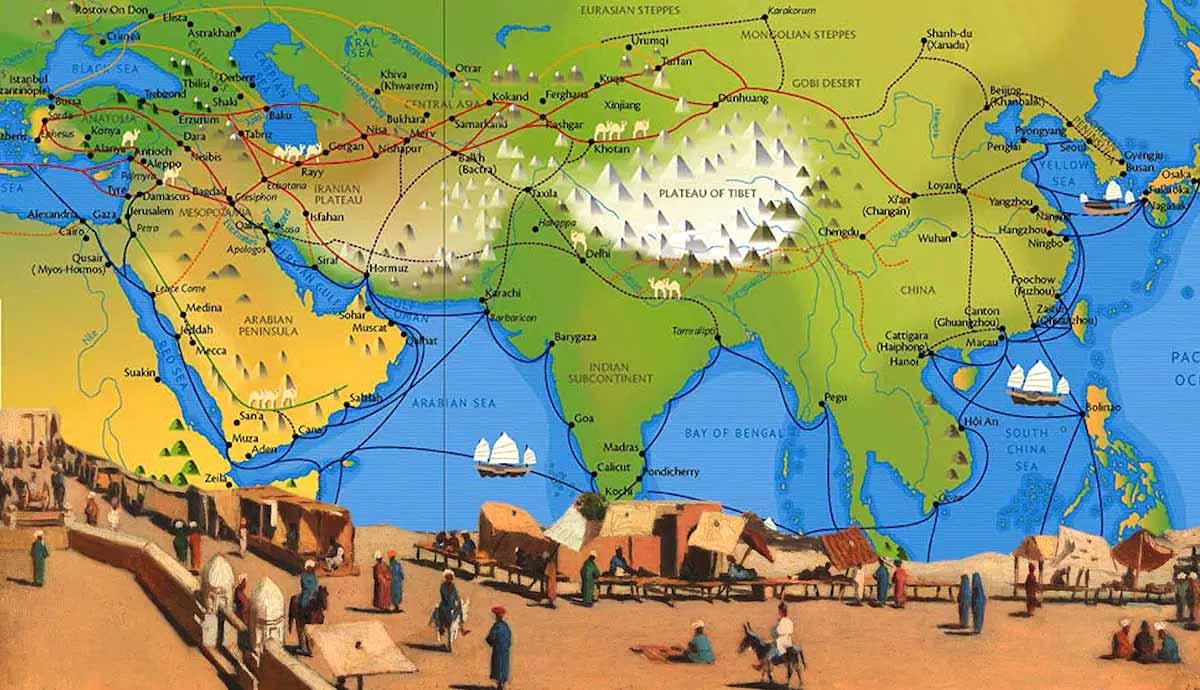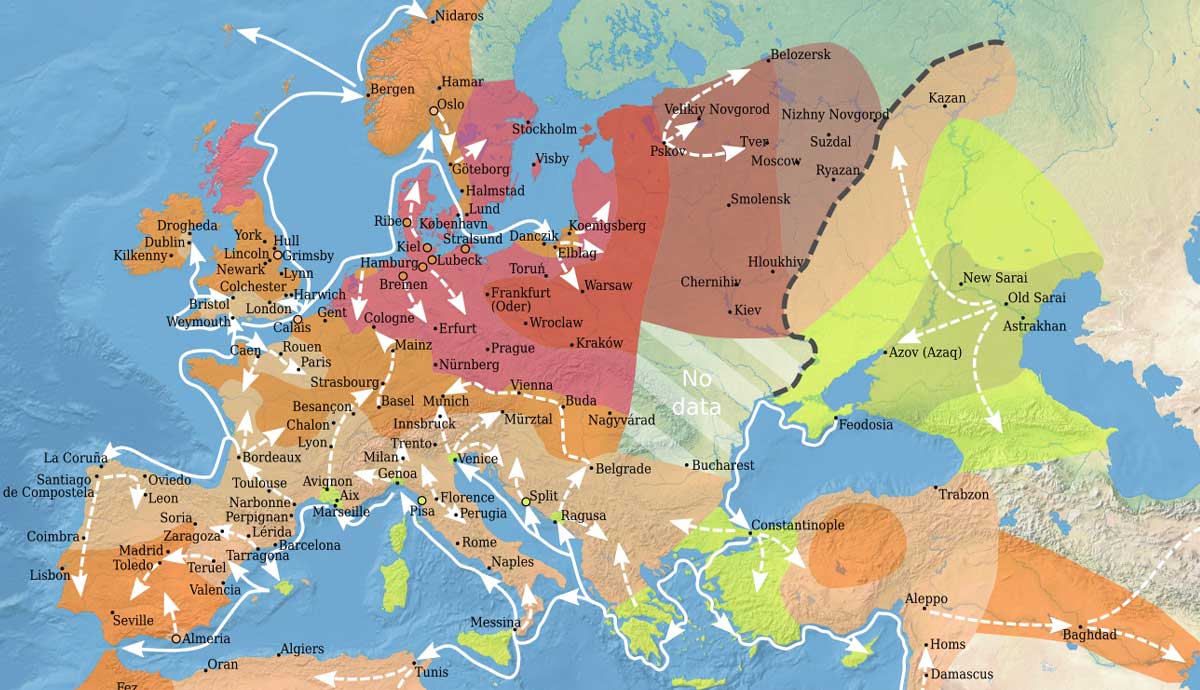
The Black Death, was a destructive 14th century plague that affected people in Europe, Asia, and North Africa. It killed millions and caused great changes to societies. Reports suggest that the malady killed between 30 and 60 percent of Europe’s population, leading to a social collapse in many of the affected regions.
Later in the 19th century, scientists found the cause of the plague. The bacterium was called Yersinia pestis. Before that, people gave the sickness dark names such as the Great Pestilence and the Great Mortality to describe the illness. The term Black Death came later and was a reference to the dark sores that appeared on victims’ bodies.
How the Plague Reached Europe

The sickness is thought to have begun on the dry plains of Central Asia – a region situated close to modern Mongolia and northwest China. From there, the plague likely traveled west along the Silk Road. It is chronicled to have reached Europe in the early 1300s after spreading inside the Mongol Empire. At the time, the empire had a trade network that connected Asia to Europe. The scourge entered the Mediterranean region in 1347 and then to Europe aboard Genoese merchant ships. The ships had just escaped a siege at the port of Kaffa.

Accounts from the era describe a unique type of warfare. Mongol soldiers reportedly threw the bodies of their dead plague victims over the walls of Kaffa with an aim to infect the people inside. Sailors who fled on Genoese ships reportedly carried the sickness to European ports in places like Messina and Venice. From the ports, the disease spread with great speed and soon reached France, Spain, and the rest of the continent. At that time, Europe was ill-prepared to handle such a plague. Its cities were crowded and unsanitary, and its medical knowledge limited.

By the early 1350s, tens of millions of people had died from the malady. The disease did not just move from person to person, it was also spread by fleas. The fleas that carried the plague apparently lived on black rats which was a common pest on ships and in homes. The mix of sea trade and poor hygiene allowed the infection to spread easily across regions.
Different Variants of the Black Plague

The Black Death showed up in different forms. The most common was the bubonic type, a sickness of the lymph system. Victims would typically experience high fevers, chills, and weakness and have swollen, painful lymph nodes called buboes. In some cases, the disease came in the form of a septicemic plague. That version affected the blood and caused severe internal bleeding. The pneumonic form, the deadliest of all, infected the lungs and was usually spread through the air.
Doctors at the time had no clear evidence about how disease spread. As such, theories ranged from poor air quality to the wrath of God. This was because illnesses were not usually based on medical science.
Social Effects of the Black Plague

The plague caused a lot of panic and a breakdown of social order. Whole towns were left empty and cities had to make use of mass graves due to the rapid pileup of bodies. A severe shortage of workers also led to a decline in farm produce. The great loss of life caused people to blame minority groups. Jewish communities, for example, were falsely accused of poisoning wells. The accusations led to massacres across Europe. The bacterium began to fade around 1351.
However, it did not vanish completely. It found a new home in local rodent populations. The animal hosts ensured that the disease would return. Subsequently, the plague kept striking Europe in waves for centuries but with less severity compared to the first outbreak. The aftermath of the plague changed European society forever as labor became scarce. The scarcity enabled peasants to ask for higher pay and better working conditions. The changes caused the feudal system to weaken and gave rise to a stronger middle class.
Causes of the Black Plague

In the 19th century, a scientist named Alexandre Yersin identified the Yersinia pestis bacterium during an outbreak in Hong Kong. He made the link between the plague, fleas, and rodents. His work put an end to the old unconfirmed theories about the disease. Modern genetic studies have since confirmed the bacterium’s presence by analyzing the early graves of victims. Today, the Black Death is regarded as one of the deadliest diseases in human history. It not only caused death, but lasting changes in medicine, local economies, and social structures.
